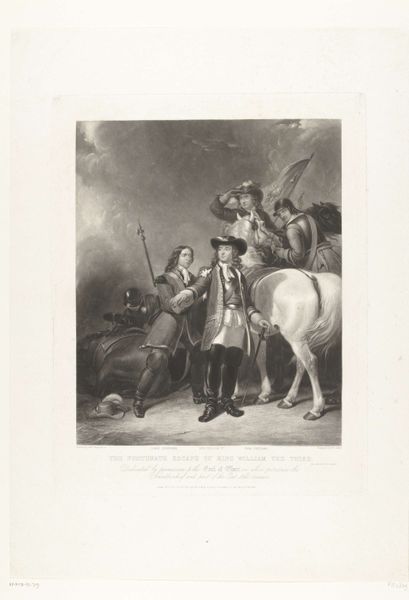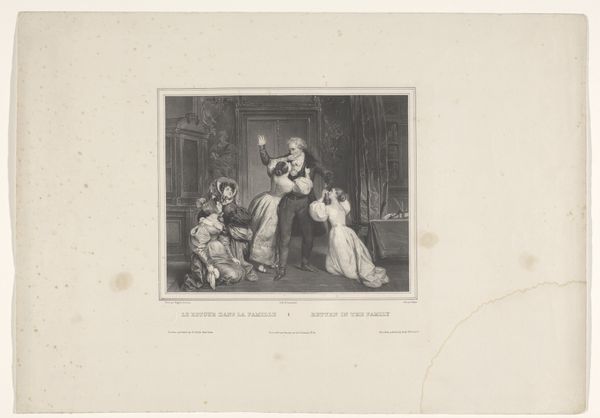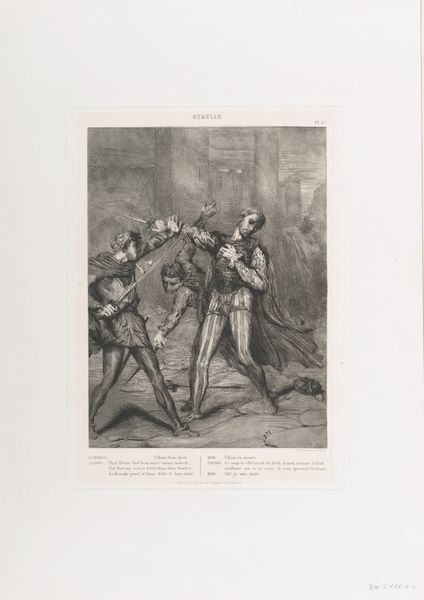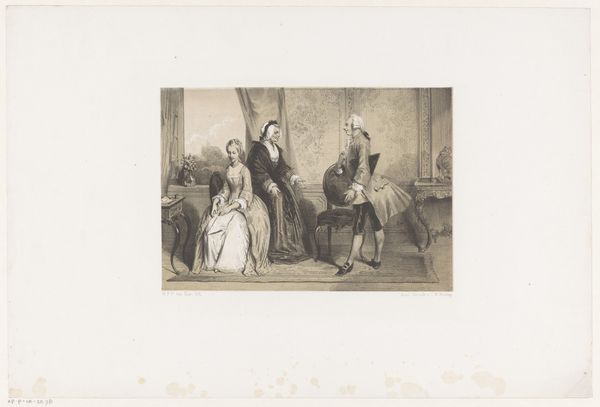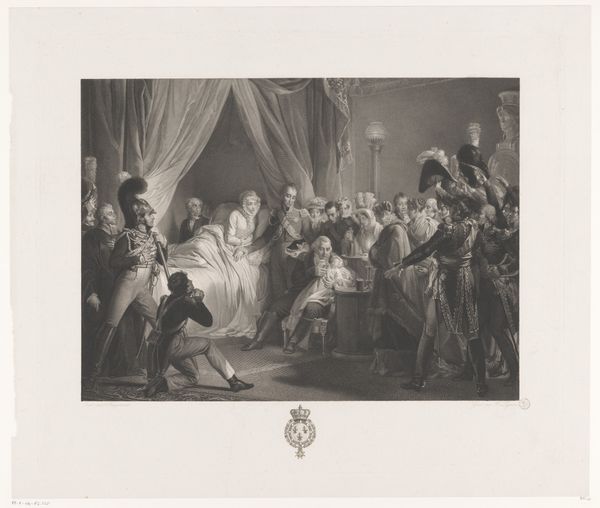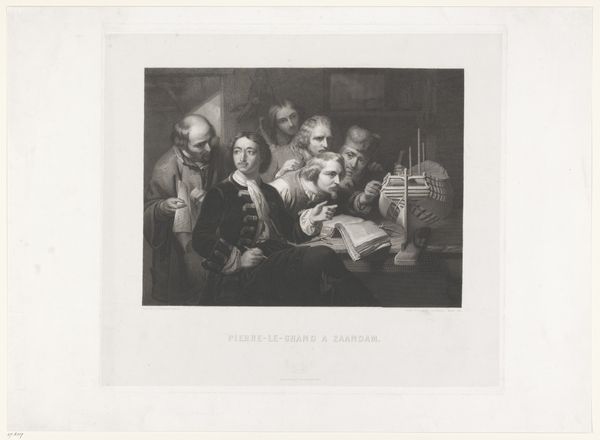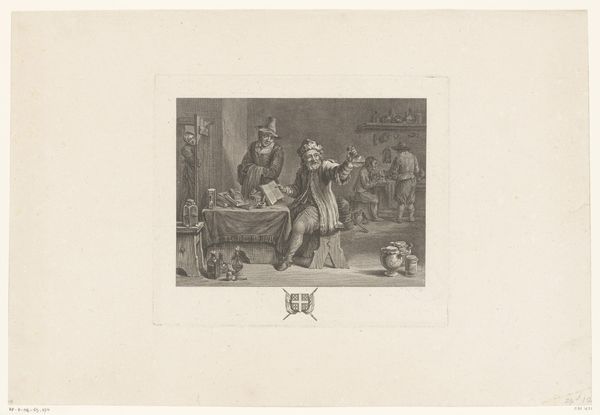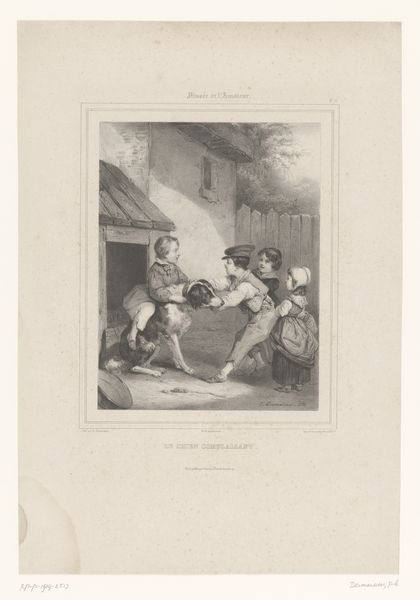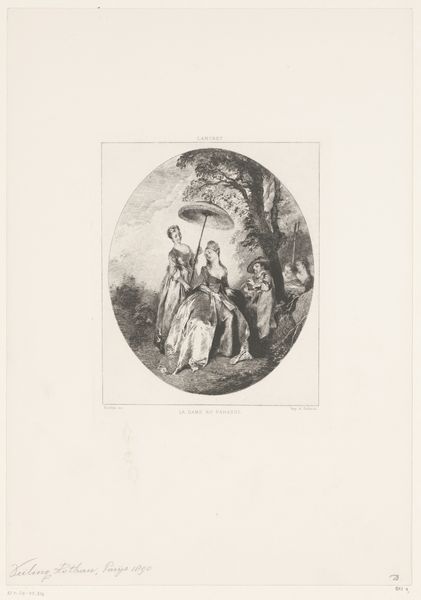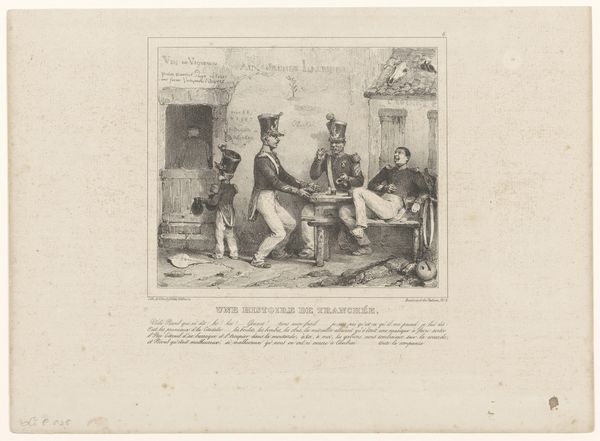
print, engraving
# print
#
history-painting
#
engraving
#
realism
Dimensions: height 495 mm, width 441 mm
Copyright: Rijks Museum: Open Domain
Curator: Let's turn our attention to a print titled "H. Martinus te paard, zijn mantel in tweeën snijdend," potentially from 1873, attributed to Joseph Franck. It depicts the well-known story of Saint Martin dividing his cloak. Editor: My initial impression is struck by the contrast between the opulence of Saint Martin's attire and the palpable vulnerability of the beggar. It's rendered with such crispness for an engraving. The horse is rather striking, too. Curator: The artistic process inherent to engravings underscores that divide. Consider the labor and materials: the metal plate, the precise carving tools, and the societal context where the value of craft intertwines with depicting hallowed subject matter. The sharp lines reinforce the very act of division in Martin's act of charity. Editor: Indeed. And considering Saint Martin's identity, the narrative speaks to a pivotal moment, highlighting themes of compassion and social responsibility, but also touches on structures of power – the privileged position of the saint versus the disenfranchised beggar. Where does duty intersect with the realities of marginalization? Curator: Looking at it through the lens of feminist theory, how does the representation of these men, their bodies, contribute to ideas about masculinity in the 19th century? Martin as the active, giving protector; the beggar in a posture of complete reliance, of need. Editor: Precisely. The cloak itself, then, becomes a potent symbol, material evidence of this exchange and of access to basic resources. The labor woven into creating that textile now literally embodies an act of human connection and possibly a critique of uneven resource allocation. Curator: Absolutely. This engraving invites contemplation on themes that resonate profoundly, not just the immediate act of charity, but broader questions about power dynamics and social responsibility—especially considering that 1873 could be marked by vast political upheaval, colonial exploitations, and nascent labor movements. Editor: The beauty of art lies in its capacity to trigger precisely this multilayered introspection. It moves beyond the aesthetic, prompting deeper engagements with our histories, both material and moral.
Comments
No comments
Be the first to comment and join the conversation on the ultimate creative platform.
